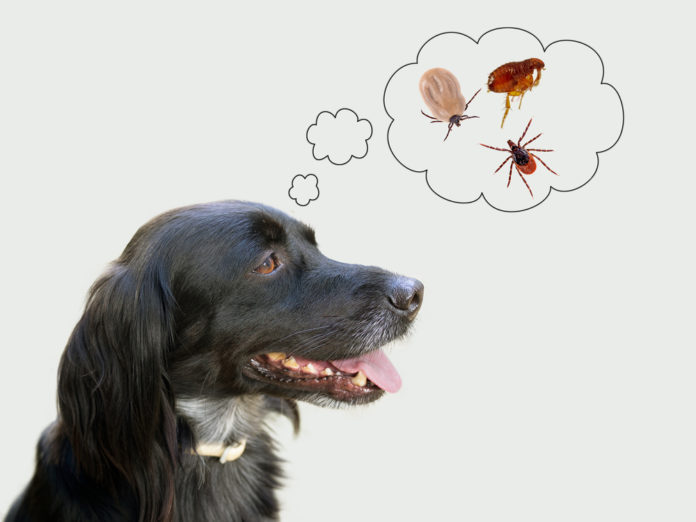5 common ingredients to repel fleas and ticks

Help keep fleas and ticks off your dog and cat with these five common ingredients!
It’s almost that time of year again…flea and tick season. Instead of reaching for chemical spot-on preventatives (which can do more harm than good), why not prevent your dog or cat from being bugged in a more natural fashion? Believe it or not, a number of common ingredients can be used to fend off fleas and ticks – and they might already be in your fridge or pantry!
Apple cider vinegar
Is there anything ACV isn’t good for? Because of its acidity, this ingredient is displeasing to fleas and ticks. That said, its acidity also makes it a too bit harsh to apply directly to your animal’s skin, so be careful! Instead of applying it undiluted, you can use ACV to make your own homemade bug spray using the following recipe:
- 4 cups distilled water
- 1 cup apple cider vinegar
- 3 tablespoons aloe vera
- 1 tablespoon peppermint castile soap
Combine all ingredients in a spray bottle and apply liberally to your animal’s coat as needed.
Yeast
Brewer’s yeast is another ingredient with high acidity, which makes it a great weapon against fleas and ticks. It also contains many vitamins and minerals, including magnesium, potassium, iron, zinc, B vitamins, and antioxidants. You can add this ingredient to your pup’s meals — just be careful not to give him too much as it’s known to cause gas. Roughly one tablespoon per day for a 50lb dog is recommended.
Lemon juice
No discussion about acidity would be complete without a mention of citrus! Combine equal parts lemon juice and water and spritz your dog (and yourself) to combat fleas and ticks. Don’t use this blend on cats – they tend to not like lemon.
No lemon juice on hand? Boil some orange peels and use that water instead…once it’s cooled, of course.
Why are spot-on flea and tick products so dangerous? Click here to find out!
Almond oil
This nutty oil contains sulfur, a natural tick repellent. Just put some on your palms and massage it directly into your animal’s skin and coat to keep biters at bay. He’ll also reap the additional benefits almond oil has to offer – it’ll moisturize, condition and help reduce skin inflammation!
Herbs
Common herbs like rosemary and mint are a great way to flavor your favorite dishes…and fend off bugs! Boil the leaves from these herbs and allow the water to cool before spraying it on your animal’s coat.
Combat fleas and ticks with essential oils
High quality, therapeutic grade essential oils make a great addition to any bug-repelling regime. Certain EOs like citronella, clove, lemongrass, eucalyptus, cedarwood and lavender work to deter most insects. Simply mix a few drops in a bottle with water and spritz your indoor and outdoor spaces. You can also add a drop or two directly to your animal’s collar, bed or coat. Again, be absolutely sure to use a top quality brand that’s safe for dogs and cats, and avoid spraying essential oils near his face!
Already have fleas?
If your home is already flea-infested, it’ll take more than a little lemon juice to rectify the problem. To rid your space (and animals) of these pests, follow these steps:
- Clean your space – Thoroughly vacuum all carpets, upholstery and mattresses, wash (and heat dry) your bedding and clothes, and wipe down all surfaces, including walls and baseboards, with a natural all-purpose cleaner.
- Bath your animal – Pick up a natural flea shampoo and wash your dog or cat from head to tail. Fleas typically gravitate toward the neck and base of the tail, so spend extra time scrubbing those areas. Rinse well.
- Remove flea eggs – Using a flea comb, remove eggs and dead adult fleas from your animal’s coat.
Note: unless you opt to use chemical-based products around your house and on your animal (which should only be a last resort), this three-step process may have to be repeated a few times before you’re flea-free.




